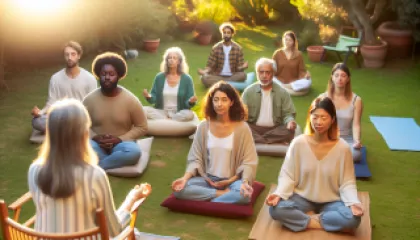Mastering Feedback: The Ultimate Guide to Dealing with Negative Criticism
Welcome to the Ultimate Guide to Dealing with Negative Criticism. Whether it's in the workplace, personal relationships, or creative endeavors, receiving negative feedback can be challenging and emotionally taxing. However, it's important to remember that feedback, even when negative, can provide valuable insights for growth and improvement. In this comprehensive guide, we will explore effective strategies and techniques for handling criticism with grace and using it as a tool for personal and professional development.
Section 1: Understanding the Nature of Criticism
1.1 What is Criticism?
Criticism is the act of offering an evaluation or judgment about someone's work, behavior, or ideas. It can come in various forms, including constructive criticism, which aims to help the recipient improve, and destructive criticism, which focuses on tearing down rather than providing useful feedback.
1.2 Why Does Negative Criticism Affect Us?
Negative criticism often triggers emotional responses such as frustration, anger, or self-doubt. Understanding why criticism affects us can help us develop resilience and learn to separate our self-worth from external opinions.
Section 2: Building Emotional Resilience
2.1 Cultivating Emotional Well-being
Prioritizing emotional well-being is essential for effectively managing negative criticism. This section will explore various practices, including counseling for depression, mindfulness exercises, and stress relief methods, to enhance emotional resilience and maintain a healthy mindset.
2.2 Recognizing Triggers and Emotions
Learning to identify our triggers and emotions when faced with negative criticism empowers us to respond more thoughtfully. We will discuss strategies for self-reflection and self-awareness that can help us navigate challenging feedback situations.
Section 3: Strategies for Handling Negative Criticism
3.1 Active Listening
Active listening is a crucial skill that allows us to fully understand and process criticism. This section will provide practical tips on improving our communication skills, including active listening techniques, paraphrasing, and asking clarifying questions.
3.2 Seeking Clarification and Feedback
When faced with negative criticism, seeking clarification can help us gain a deeper understanding of the feedback. We will explore effective ways to ask for additional information and feedback to ensure we grasp the critic's perspective fully.
3.3 Assessing the Validity of Criticism
Not all criticism is valid or constructive. In this section, we will discuss methods for evaluating the credibility and relevance of feedback, allowing us to discern between valuable insights and baseless negativity.
3.4 Responding Gracefully
Responding to negative criticism with grace and professionalism is crucial for maintaining healthy relationships and fostering open dialogue. We will provide guidelines for crafting assertive and respectful responses that address the concerns raised while maintaining a constructive tone.
Section 4: Turning Criticism into Growth
4.1 Embracing Growth Mindset
A growth mindset is the belief that abilities and intelligence can be developed through dedication and hard work. This section will explore how adopting a growth mindset can transform negative criticism into an opportunity for personal and professional growth.
4.2 Learning from Criticism
Every piece of criticism, even when delivered poorly, contains potential lessons. We will discuss techniques for extracting valuable insights from negative feedback and applying them to improve our skills, performance, and relationships.
Section 5: Nurturing a Constructive Feedback Culture
5.1 Providing Constructive Criticism
Learning to deliver feedback constructively is just as important as receiving it. This section will explore effective strategies for providing constructive criticism that promotes growth, supports others' emotional well-being, and fosters positive relationships.
5.2 Creating Safe Spaces for Feedback
Building an environment where open and honest feedback is encouraged is key to personal and collective growth. We will discuss methods for creating safe spaces that facilitate constructive conversations and help individuals feel comfortable sharing their thoughts and ideas.
Section 6: Conclusion
In conclusion, handling negative criticism is a valuable skill that can lead to personal and professional growth. By understanding the nature of criticism, building emotional resilience, implementing effective strategies for handling feedback, and nurturing a constructive feedback culture, we can transform negative criticism into an opportunity for self-improvement and collaboration. Remember, the way we respond to criticism defines our growth journey, so let's embrace it with open minds and open hearts.






